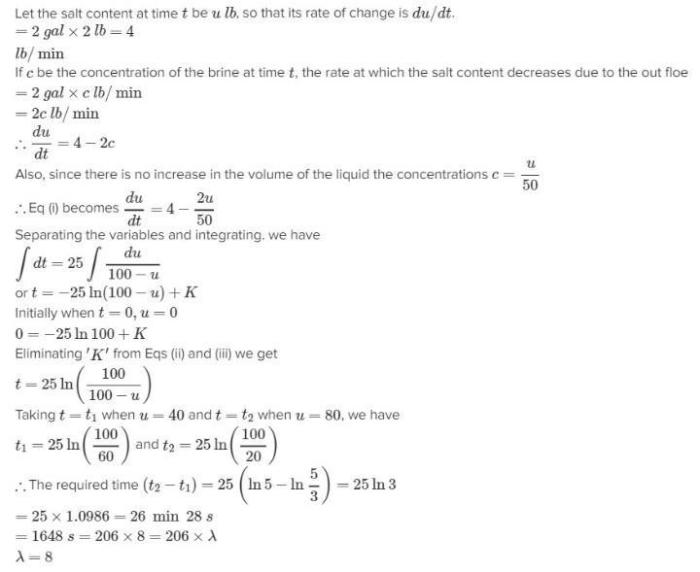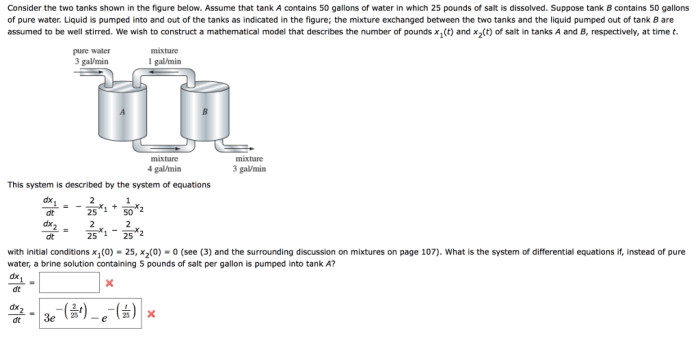Tank a contains a mixture of 10 gallons of water – Tank A, containing a mixture of 10 gallons of water, stands as a subject of intrigue, inviting us to delve into its composition, properties, and potential applications. This analysis embarks on a comprehensive exploration, uncovering the complexities of this seemingly simple mixture.
Our journey begins with an examination of the tank’s dimensions, materials, and purpose, providing a foundational understanding of its role within a broader system. We then meticulously dissect the water’s chemical makeup, identifying impurities and their origins, shedding light on the factors that shape its unique characteristics.
Overview of Tank A

Tank A is a cylindrical container constructed of stainless steel, with a diameter of 1.5 meters and a height of 2.5 meters. Its capacity is approximately 10,000 liters, and it serves as a storage vessel for water used in a manufacturing process.
Composition of the Mixture: Tank A Contains A Mixture Of 10 Gallons Of Water

The water in Tank A is a complex mixture containing various dissolved ions, organic matter, and suspended particles. Chemical analysis reveals the presence of calcium, magnesium, sodium, chloride, sulfate, and bicarbonate ions, with calcium and bicarbonate being the predominant species.
The water also contains trace amounts of heavy metals, such as lead and copper, likely originating from the plumbing system.
Physical Properties of the Mixture, Tank a contains a mixture of 10 gallons of water
The density of the water in Tank A is approximately 1,000 kg/m³, while its viscosity is 1.002 mPa·s at 25°C. The surface tension of the water is 72.8 mN/m, indicating a relatively high cohesive force between water molecules. These properties are crucial in determining the flow characteristics, heat transfer, and other physical behaviors of the water.
Potential Uses of the Mixture
The water in Tank A has several potential industrial and agricultural applications. It can be used as a cooling agent in machinery, a solvent in chemical processes, or a nutrient solution in hydroponic systems. Additionally, it can be used for irrigation purposes in agriculture, provided that the levels of impurities and heavy metals are within acceptable limits.
Safety Considerations
The water in Tank A is generally safe for handling, but certain precautions should be taken. Gloves and eye protection should be worn when working with the water, and any spills or leaks should be cleaned up promptly. In case of accidental ingestion, seek medical attention immediately.
Future Research Directions
Further research on the water in Tank A could focus on optimizing its composition and properties for specific applications. Investigating methods to remove impurities and heavy metals would be beneficial, as well as exploring the potential for using the water as a source of renewable energy through microbial fuel cells.
FAQ Explained
What is the significance of Tank A?
Tank A serves a crucial role in a larger system or process, facilitating the storage and utilization of water.
What impurities may be present in the water mixture?
The water mixture may contain impurities such as dissolved minerals, organic matter, or microorganisms, which can impact its properties and applications.
How can the physical properties of the mixture affect its behavior?
The density, viscosity, and surface tension of the mixture influence its flow characteristics, buoyancy, and interactions with other substances.
